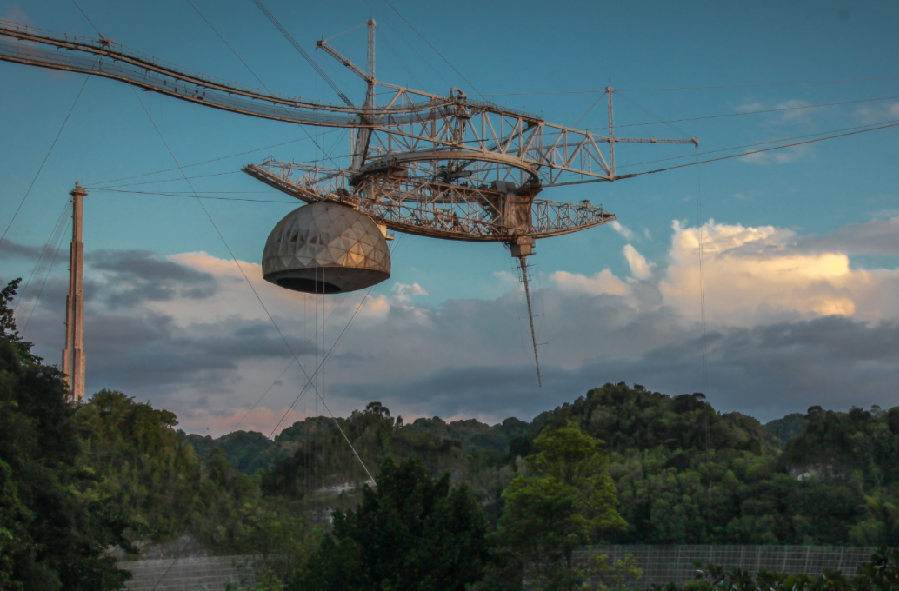Puerto Rico’s beloved Arecibo telescope collapses
The crash occurred less than two weeks after the National Science Foundation announced the site was to be decommissioned. The massive telescope, which had been in ser

PHOTO COURTESY: NATIONAL SCIENCE FOUNDATION
On Tuesday, Puerto Rico’s beloved Arecibo telescope collapsed, less than two weeks after the National Science Foundation (NSF) announced it was to be decommissioned. The massive telescope, which had been in service for 57 years, has been deteriorating since August. No injuries were reported in the incident.
In August an auxiliary cable on the massive structure broke, tearing a 30-metre hole in the reflector dish, damaging the dome, and halting operations at the facility, the Associated Press (AP) reports. Then, on November 6, its main steel cable snapped, putting the entire structure at risk of collapse.
According to the NSF, repairing the damage was not an option, as the structure would remain “unsustainable.” The agency was in the process of devising a plan to lower the platform in a controlled manner when the collapse occurred.
Arecibo, one of the largest telescopes in the world, was to help scientists search for new planets, asteroids, and extraterrestrial life. It served as a research platform for more than 250 researchers and played a vital role as a training hub for hundreds of undergraduate students.
NSF is saddened by this development. As we move forward, we will be looking for ways to assist the scientific community and maintain our strong relationship with the people of Puerto Rico.
— National Science Foundation (@NSF) December 1, 2020
“NSF is saddened by this development,” the NSF wrote on Twitter.
“As we move forward, we will be looking for ways to assist the scientific community and maintain our strong relationship with the people of Puerto Rico.”
When the NSF announced the decommissioning of Arecibo in late November, scientists took to social media to share personal experiences with the telescope and share the impact it had on the scientific community, particularly within Puerto Rico, under the hashtag #WhatAreciboMeansToMe.
They shared stories of falling in love with science, finding endless inspiration, and even getting married at the site.
The construction of the observatory was funded by the U.S. Defence Department and has made several Hollywood cameos in its 57-year history. In 1997 it appeared in the film Contact starring Jodie Foster and in 1995, it can be seen in the James Bond film GoldenEye.
